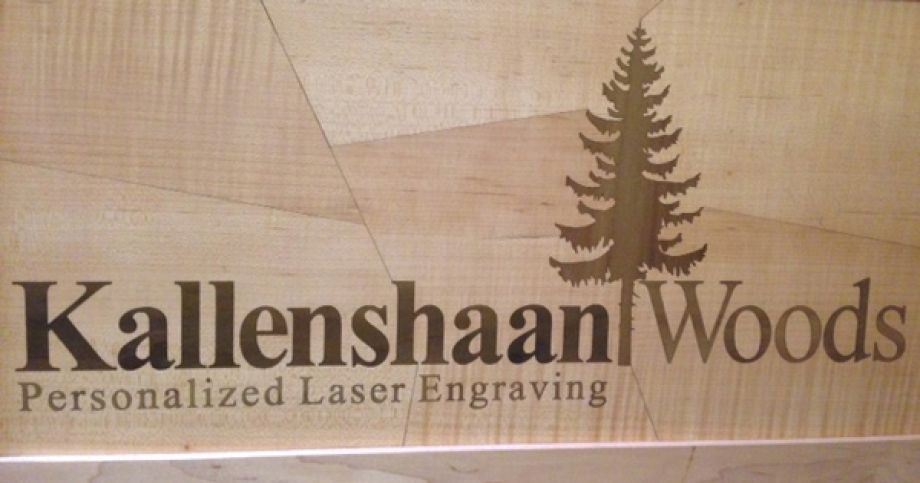
Kallenshaan Woods
Pen turning with an Epilog Laser system
With over 20 years of woodworking experience, the products of Ken Nelsen at Kallenshaan Woods range from key chains to plaques to business card holders to pen cases and pen engraving for penturners throughout the country. “I’m a woodworker by trade and try to stay within the wood arena while using the laser, but I keep coming up with new and interesting things to do with the system.” One of Ken’s most popular product lines are the wood-turned pens he designs. Using a combination of natural and painted woods, Ken is able to create unique designs on pens. For example, his American Flag design is a beautiful combination of inlaid stars and stripes in an engraved pen.
Ken Nelsen was looking for a way to expand his woodworking capabilities. “The first time I saw an Epilog Laser was at a 1993 woodworking show. When it came time to replace the laser system that I had been using for the past year, I chose an Epilog Laser. It was important to me that it was American Made as well as the fact that it is extremely versatile and flexible,” said Ken Nelsen.
The Challenge:
The tool most people use when engraving a cylinder is Epilog’s Rotary Attachment, which will turn the cylinder as the pen is engraved. While the attachment is a great solution for engraving on cylinders, Ken saw a major problem with this setup for an inlay project – unless the inlayed pieces are being cut from a cylinder with the same diameter as the engraved cylinder, he was not going to get clean, tight fitting pieces. The walls that are engraved on a rotary attachment are tapered toward the center of the cylinder, while the walls of the inlays cut from a flat piece of wood will be straight sided. (See Diagram 1).
The Solution:
Ken was able to use the laser system’s versatility to create an acrylic jig that would allow him to equally space a design around the entire pen so that he could turn the pen one notch, engrave an area, turn the pen, and engrave the next area. For example, on the American Flag pen, the base of the pen has 14 equally engraved stripes around it. This jig would allow him to cut hundreds of stars and stripes from a flat piece of wood at one time, knowing that each one would fit perfectly into the engraved slots of the base.
Ken used the laser to create the acrylic jig by cutting several notched wheels from an acrylic sheet that would accommodate virtually any amount of stops around a cylinder. By placing a small knife in the slot to hold the piece, he was able to engrave a section of the pen, turn the jig one section, and place the knife in the next slot, always knowing the he was engraving an equally proportion of the pen (See Diagram 2). With a little ingenuity, and the use of the laser, Ken was able to find a solution to his inlay problem. Now he can quickly put together pen kits that can be built by anyone, increasing his business and his profits!
Please visit Kallenshaan Woods at: www.kallenshaanwoods.com.





